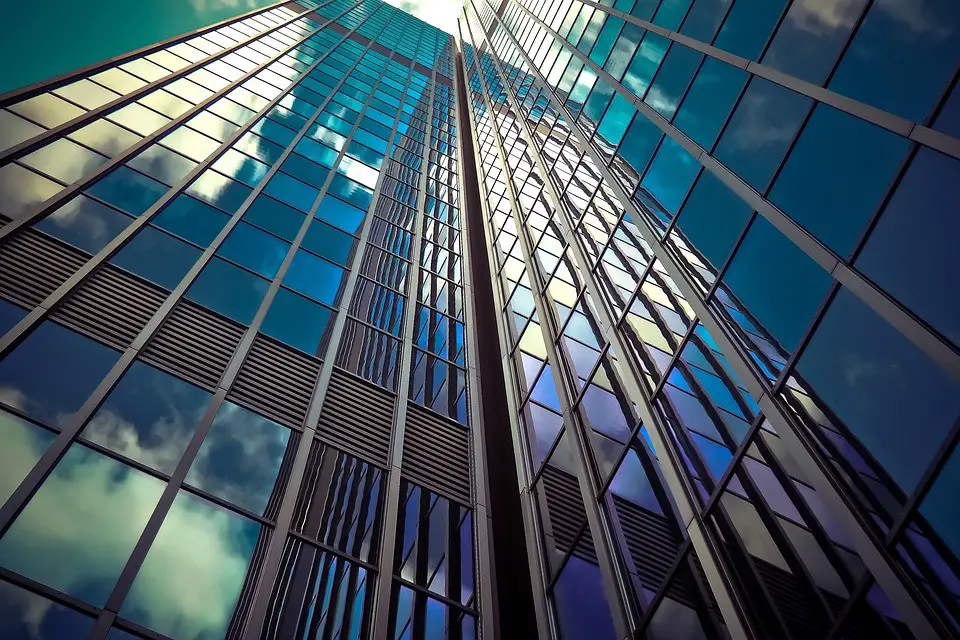There is a familiar children’s rhyme asking the rain to go away; but architects and building planners know that’s not going to work. When planning exterior cladding for commercial buildings, architects instead have to consider different types of rainscreen façade panels. This article outlines the options and the benefits of these highly durable architectural panels.
Rainscreen façade panels are designed to drain rain away from the exterior. They are also constructed to help moist air escape too. These features help improve commercial building durability. Plus, while offering exterior protection, they can also add a design element to the building.
What is a Rainscreen Façade Panel?
There are several different types of rainscreen façades, as there is no one-size-fits-all solution. These ventilated exterior panels are built to suit the needs of the building.
A rainscreen façade panel system uses several construction elements including the exterior panel facing or cladding, the ventilation and drainage cavity, the weather resistant barrier (WRB), structural wall and, possibly, building insulation.
The cladding material can be made of several different materials. Options include ceramic, metal, wood, slate, and high-pressure laminate (HPL) panels.
HPL rainscreen façade panels (also known as phenolic panels) are high quality, colorfast, and code compliant. Made with kraft paper, resin, and double-hardened acrylic-polyurethane surfaces, these compact panels offer high mechanical strength and require minimal maintenance.
You might think of rainscreen facade as a weather-resistant coat for your commercial building. Why is it needed? Without a system in place to vent or drain moisture, the building cladding could absorb water. Imagine a window leaks, that water is going to go on the weather resistant barrier (WRB).
Restoring a building with moisture damage can be costly. The cladding, WRB, window flashing, sheathing, framing, and insulation could all need to be redone.
Water damage is not something a building owner wants to risk. After all, the ASTM notes, “90% of all wall failures are the result of moisture related issues.”
What are the Different Rainscreen Options?
The most common types of rainscreen façades are:
- Pressure equalized (PE)
- Vented
- Drained and back-ventilated (DB/V)
Pressure Equalized Rainscreens (PER)
These systems are installed with mathematically determined openings to optimize airflow in and out. Pressure on either side of the system is equalized to moderate wind pressure against the wall, force moisture through the cladding, and reduce water penetration.
Drained and Back-Ventilated
Also benefiting from the natural physics at work, the DB/V system has openings at the top and bottom. This ensures air movement over the entire wall from top to bottom but also adds a drainage feature. An overhang over the open top protects the structure. Phenolic panel rainscreen systems are typically open joint, drained and back-ventilated systems.
These different types of rainscreen suit buildings located in relatively wet climates as well those that experience high winds, heavy snowfall, or hot temperatures.
What Are the Benefits of Rainscreen Façade Paneling?
Along with offering ventilation and drainage to prevent the building walls from absorbing moisture, a rainscreen façade panel offers other advantages too. These include:
- Protection from ultraviolet radiation
- Management of negative wind pressure
- Reduction of vapor transmission
- Better control of heat transfer in and out of the building
- Added energy efficiency
- Decreased maintenance needs
- Improved indoor air quality
- Prevention of mold
HPL rainscreen façade systems stand up long-term to harsh weather conditions and other environmental factors. They also can be manufactured to integrate with a building’s aesthetic and make a design impact.
In one example in New York, the Victor Central School District wanted something that would “pop” while still practical in price. Adding HPL rainscreen panels to the building exterior in a bright Gentian Blue gave the education building a practical and branded customization.
Rainscreens provide better drainage and airflow than other siding materials, including wood, fiber cement, stucco, masonry, and concrete, which would otherwise absorb water. This innovation supports sustainability efforts by minimizing the risk of water damage and supporting a longer lifespan for building exterior materials.
The Versatility of Rainscreens
Rainscreen façade paneling can be customized to meet the distinct needs of any commercial building project. Offering durability without sacrificing design, these systems support moisture movement, quick drying, and ample venting.
The right rainscreen system is an investment in building longevity and material sustainability, which can help commercial building designers and builders protect their reputation too.
Author Bio
Chad Bryant is the Managing Director at FunderMax North America, Inc. Since 1890, FunderMax has been a leading provider of sustainable HPL phenolic panels for exterior, interior, and laboratory surfaces that are customizable, durable, and easy to install. Learn more on our website at fundermax.us.

